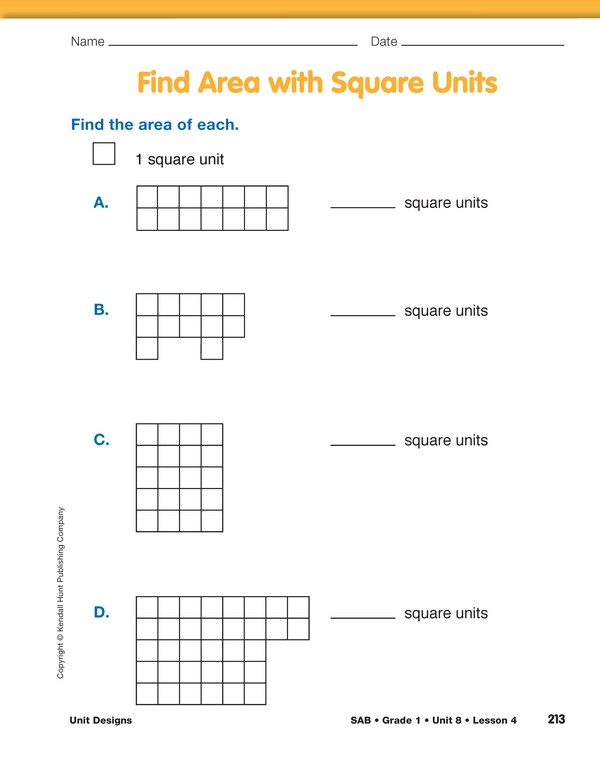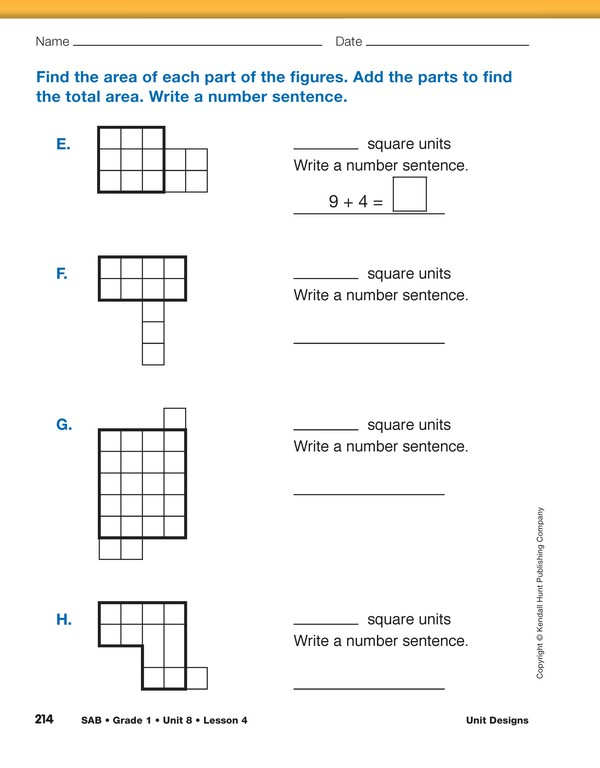Unit Designs
Est. Class Sessions: 1–2Developing the Lesson
Part 2: Skip Counting and Adding to Find Area
Students work in pairs to complete the Find Area With Square Units pages. Ask students to think of as many ways as they can to count the square units in the figures. Use Questions A–B to discuss different strategies with the class.
Ask:
Encourage students to first check each problem to see if it can easily be divided into smaller parts and then count the square units in the parts by skip counting.
When students finish the Find Area with Square Units pages, have each pair meet with another pair and share their counting strategies.
Ask:
Use the same prompts to discuss the shapes in Questions G–H. Emphasize the importance of partitioning the shapes into easier parts to count.














